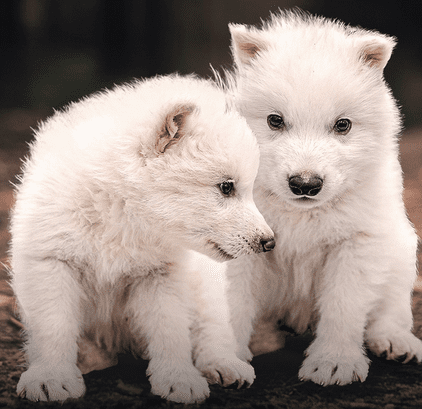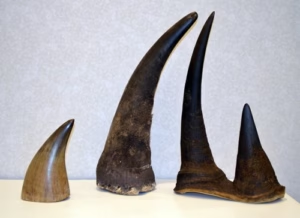In a move that has sparked both intrigue and debate, Texas-based biotechnology firm Colossal Biosciences announced the birth of three genetically modified wolf pups that they claim mark the world’s first successful “de-extinction” of an extinct species — the dire wolf.
Named Romulus, Remus and Khaleesi, the pups were introduced as a scientific milestone in species resurrection. Yet despite headlines heralding the return of this ancient predator, questions persist about whether these animals truly represent the long-lost dire wolf or are simply modern wolves with a prehistoric makeover.
“Many people view dire wolves as mythical creatures that only exist in a fantasy world, but in reality, they have a rich history of contributing to the American ecosystem,”
said *Game of Thrones* author George R. R. Martin, a cultural advisor and investor in Colossal Biosciences.
“I get the luxury to write about magic, but [they] have created magic by bringing these majestic beasts back to our world.”
What Makes the Dire Wolf Unique?
The dire wolf, or Aenocyon dirus, was once a formidable carnivore that roamed across North America during the Ice Age. Unlike its modern relatives, it was built more for power than speed — fossils show that it had thicker bones, a broader snout, and a more muscular frame compared to both ancient and current wolf species.
These predators were known to hunt large prey including bison, horses, and possibly even mammoths. However, as the climate warmed and humans began to exert pressure on the ecosystem, many of the dire wolf’s prey species began to vanish. That shift is believed to have played a role in the dire wolf’s extinction around 12,500 years ago, creating space for grey wolves to migrate southward from Alaska and Canada to fill the ecological void.
While the species has captured public imagination in part due to its role in Game of Thrones, scientific studies have provided deeper insights. Fossilised remains, along with DNA extracted from ancient bones — including a 13,000-year-old tooth and a 72,000-year-old ear bone — have offered geneticists a clearer picture of what separated dire wolves from their modern counterparts.
Engineering a Comeback Through CRISPR
Using a revolutionary gene-editing tool called CRISPR, Colossal’s scientists targeted 20 specific genetic differences identified between dire wolves and grey wolves. These included traits related to size, skull structure, and fur density.
The modified DNA was introduced into egg cells harvested from domestic dogs. After successful embryo development, the embryos were implanted into surrogate dog mothers. Following a typical 62-day gestation period, the first pup was delivered via Caesarean section.
Colossal’s chief animal officer, Matt James, recalled the moment with a mixture of awe and scientific focus.
“Good lord, this thing is huge,”
he said, describing his first impression as he rubbed the pup gently between two towels to encourage breathing.
Romulus and Remus, born on 1 October 2024, are now over six months old. Each measures nearly 122 centimetres in length and weighs approximately 36 kilograms, with expectations they may reach 183 centimetres and 68 kilograms at full size. Khaleesi, the younger female born on 30 January 2025, is developing along a similar trajectory. All three display broad skulls, white coats, and robust physical features that echo their ancient blueprint.
Are They Truly Dire Wolves?
Despite the visual and genetic similarities, several experts argue that the term “de-extinction” may be misleading in this context.
“We call them dire wolves,”
said Ben Lamm, co-founder and chief executive officer of Colossal Biosciences.
Yet critics contend that the animals, whose DNA is predominantly derived from grey wolves, cannot be considered true dire wolves.
“There’s no secret that across the genome, this is 99.9 percent grey wolf,”
said Love Dalén, a professor of evolutionary genomics at Stockholm University and an adviser to Colossal.
“There is going to be an argument in the scientific community regarding how many genes need to be changed to make a dire wolf, but this is really a philosophical question.”
“It carries dire wolf genes, and these genes make it look more like a dire wolf than anything we’ve seen in the last 13,000 years. And that is very cool.”
The philosophical and biological grey area underscores the challenges of defining what qualifies as “reviving” an extinct species. Scientists agree that even with visible similarities, a creature composed almost entirely of modern DNA cannot be classified as identical to its ancestor.
Why Bring the Dire Wolf Back?
Beyond the spectacle of bringing back an Ice Age predator, Colossal sees broader implications in their work. The company argues that the technologies they are developing could bolster conservation efforts by offering new tools to counteract genetic bottlenecks in endangered populations.
“This project demonstrates the awesome potential for advances in genetic engineering and reproductive technologies to recreate lost diversity,”
said Andrew Pask, a member of Colossal’s advisory board.
“This work underpins pioneering research that seeks to stabilise ecosystems to prevent further biodiversity losses and to create new methods to actually restore lost biodiversity.”
Some conservationists are cautiously optimistic about the potential. Others worry the spectacle of de-extinction could distract from more pressing environmental threats and the practical challenges of protecting currently endangered species.
“We can’t protect what we already have,”
warned Dan Ashe, President and Chief Executive Officer of the Association of Zoos and Aquariums in Canada, in a comment to the *Toronto Star*.
Commercial Momentum
Colossal has secured substantial financial backing, with investor commitments reaching 435 million United States dollars. The company’s valuation now stands at an estimated 10.2 billion United States dollars, a testament to the widespread interest — and commercial promise — in cutting-edge genetic technology.
For now, the firm is closely monitoring the health, development, and behavioural patterns of Romulus, Remus and Khaleesi. While these animals remain under careful observation, the company has signalled plans to advance similar projects, including the long-discussed resurrection of the woolly mammoth.
















